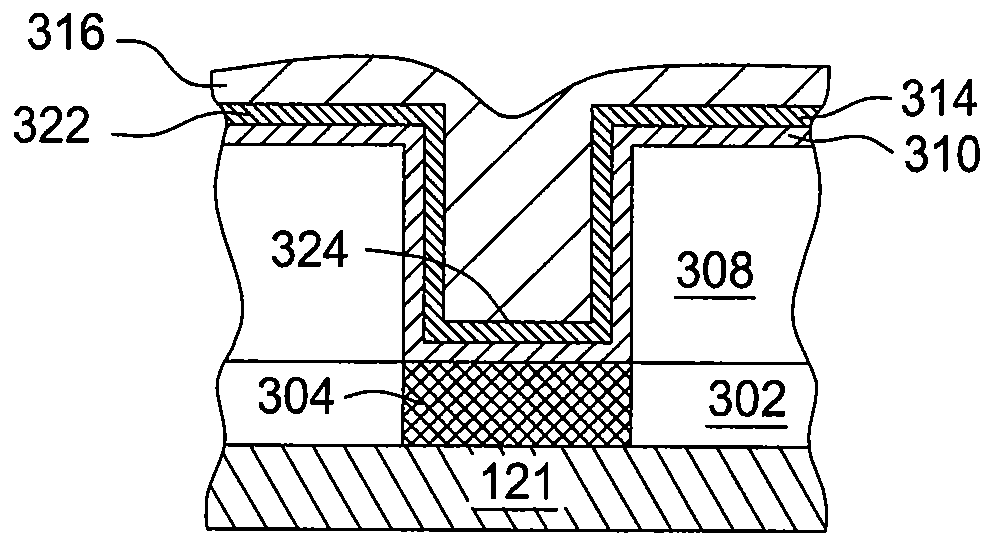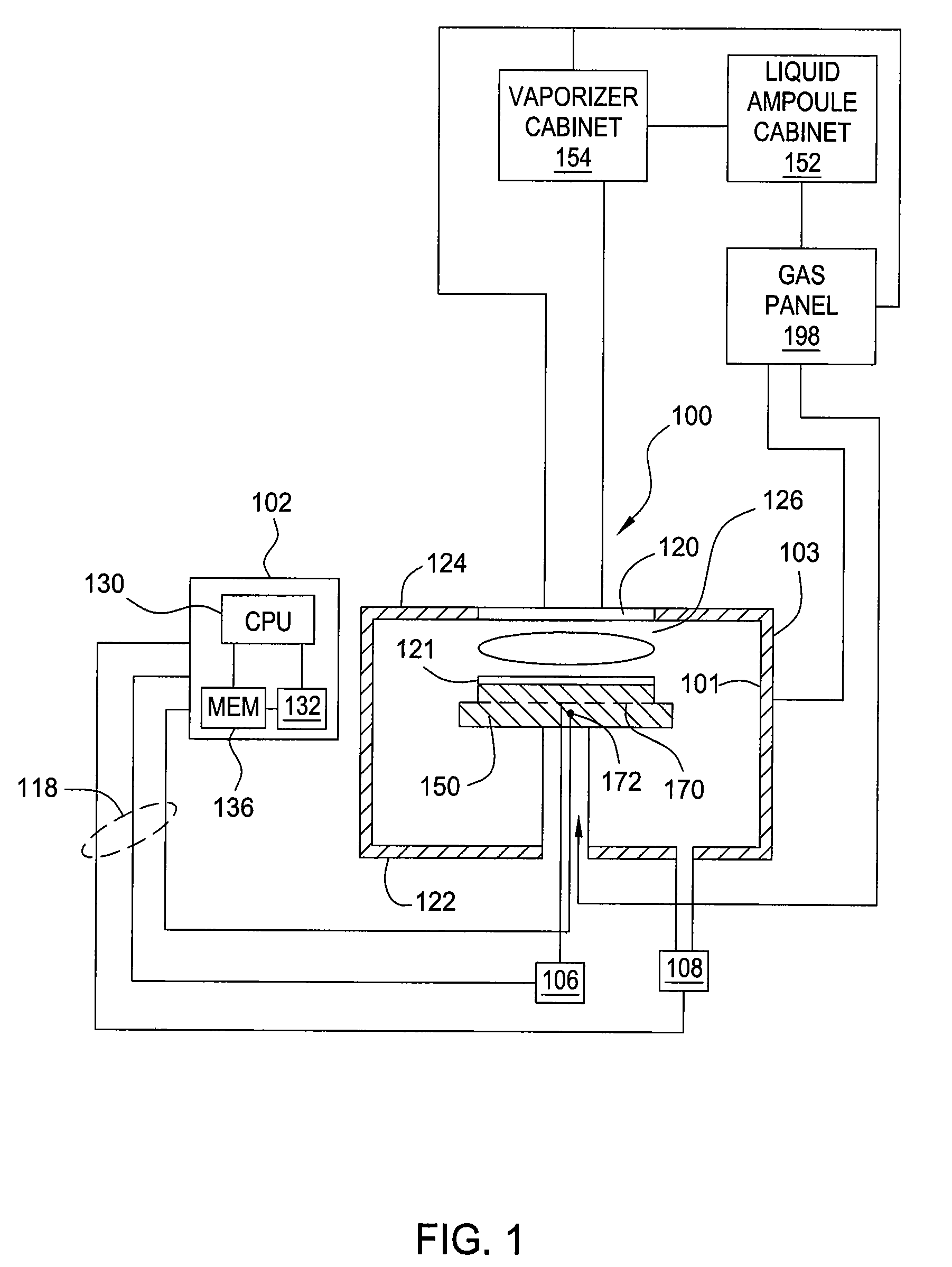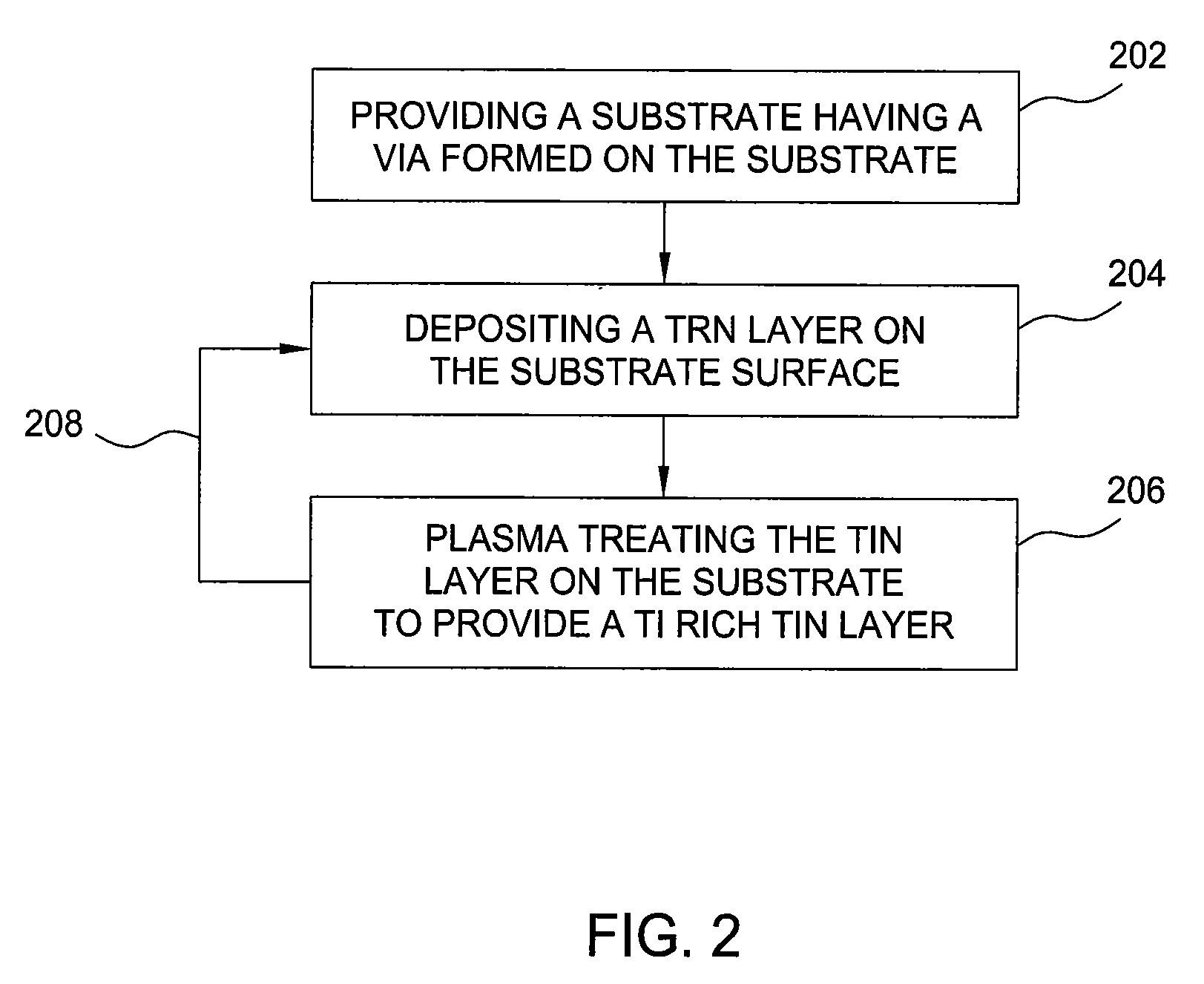Densification process for titanium nitride layer for submicron applications
a technology of titanium nitride and densification process, which is applied in the direction of coating, chemical vapor deposition coating, metallic material coating process, etc., can solve the problems of voids formed in the via or trench, the deposition process has difficulty filling the submicron structure, and the amount of ongoing effort is directed
- Summary
- Abstract
- Description
- Claims
- Application Information
AI Technical Summary
Benefits of technology
Problems solved by technology
Method used
Image
Examples
Embodiment Construction
[0019]One embodiment of the invention provides a method of forming and densifying a titanium nitride layer on a substrate by exposing the substrate to a hydrogen and nitrogen containing light plasma. The densification process is performed at a relatively low RF plasma power and a high nitrogen to hydrogen ratio so as to provide a substantially titanium rich titanium nitride barrier layer. The titanium nitride barrier material may contain a single densified titanium nitride layer or a titanium nitride barrier stack containing two, three, or more densified titanium nitride layers. Each densified titanium nitride layers may have a thickness of about 20 Å or less. Subsequent to exposing the substrate to a hydrogen or nitrogen containing plasma process, the method provides exposing the substrate to air for a predetermined time period prior to depositing a conductive layer on the substrate. In one embodiment, the titanium nitride layer is deposited by a CVD process, a MOCVD process, an AL...
PUM
| Property | Measurement | Unit |
|---|---|---|
| Time | aaaaa | aaaaa |
| Time | aaaaa | aaaaa |
| Time | aaaaa | aaaaa |
Abstract
Description
Claims
Application Information
 Login to View More
Login to View More - R&D
- Intellectual Property
- Life Sciences
- Materials
- Tech Scout
- Unparalleled Data Quality
- Higher Quality Content
- 60% Fewer Hallucinations
Browse by: Latest US Patents, China's latest patents, Technical Efficacy Thesaurus, Application Domain, Technology Topic, Popular Technical Reports.
© 2025 PatSnap. All rights reserved.Legal|Privacy policy|Modern Slavery Act Transparency Statement|Sitemap|About US| Contact US: help@patsnap.com



